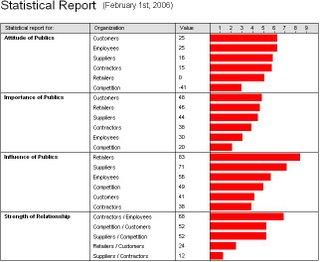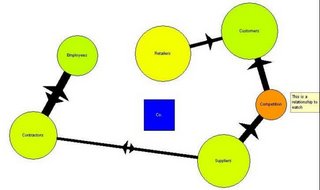 We hear a lot about stakeholders and what this means to people and corporations. With Peter Prowse and Dr Jon White, I do a lot of work in the area.
We hear a lot about stakeholders and what this means to people and corporations. With Peter Prowse and Dr Jon White, I do a lot of work in the area. The ability to identify stakeholders in a robust and replicable way and a capability to identify the most and least significant stakeholders is important and we have been doing this for over a decade.
Our problem now is that the idea of social segmentation requires a much more holistic approach our networked cultures.
I am not sure if this makes stakeholder mapping, social segmentation or definitions of publics obsolete but there is no doubt that a 'list' of 'stakeholders' is pretty useless.
One of the most interesting aspects of our work is that when you have a board of directors and ask them to name the most important, most influential and those social groups who like the organisation most to least, they have pet interests. As they compare a wider range of social groups/stakeholders they also change their views. The need for a robust process is important (we use a focus group and visualisation process).
When one asks about the stakeholders relevant to issues, the debate becomes even more interesting.
Most managers initially see a very narrow range of stakeholders relevant to an issue. But in a very short time, it grows and often what was seen as outside influences become internal management relations issues.
 The need to be able to harness a range of communications capabilities that assist in culture building is frequently seen as an important part of issues management.
The need to be able to harness a range of communications capabilities that assist in culture building is frequently seen as an important part of issues management.
As crisis hits, that 30 minute analysis of stakeholder is the most important 30 minute in the process but a good defence from crisis is good stakeholder analysis and management in the first place.
Incidently, we are also looking for additional internal and external consultants who want to use the Clarity Concept - it helps if you have an academic as well as consultant background.
No comments:
Post a Comment